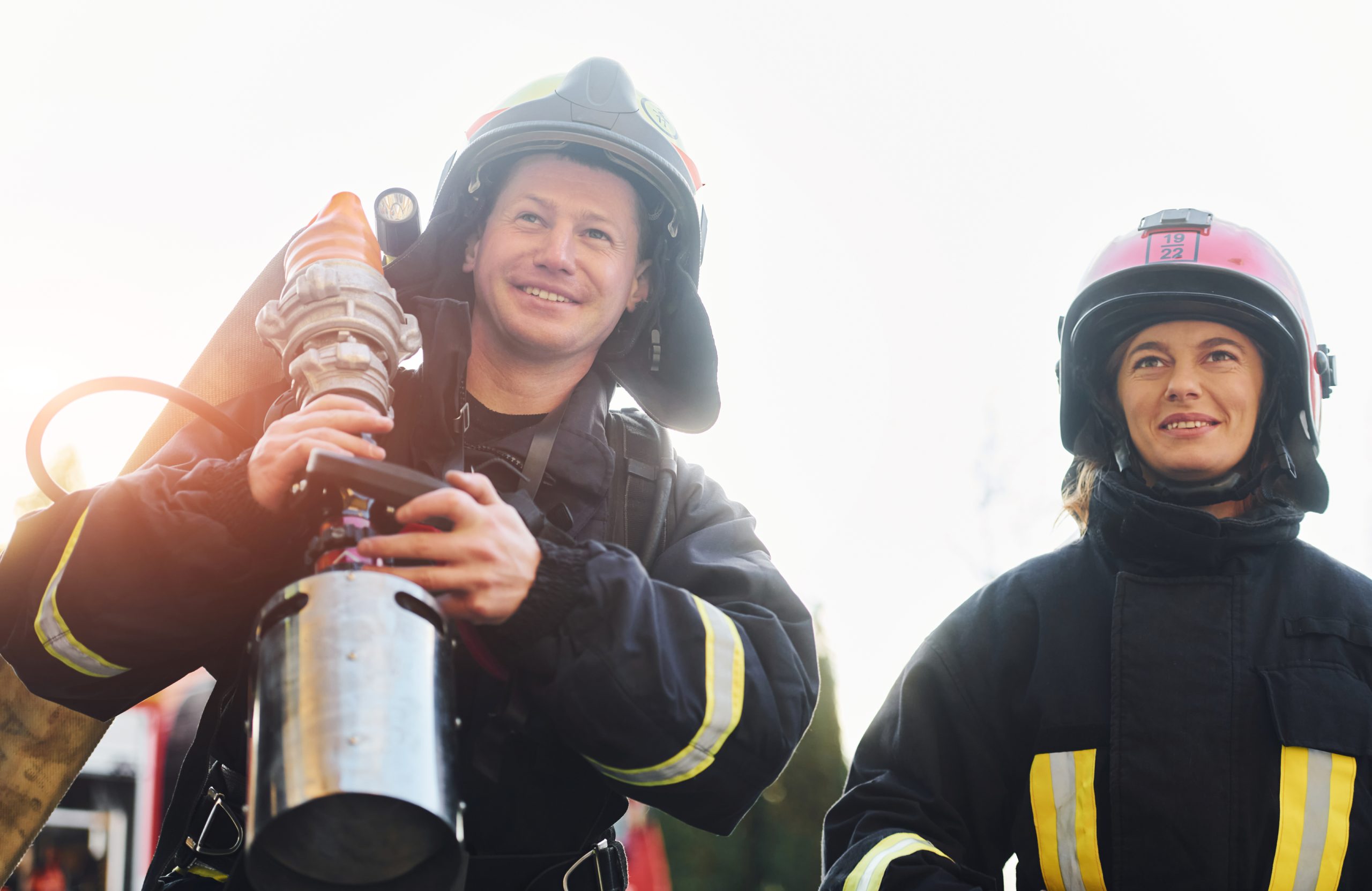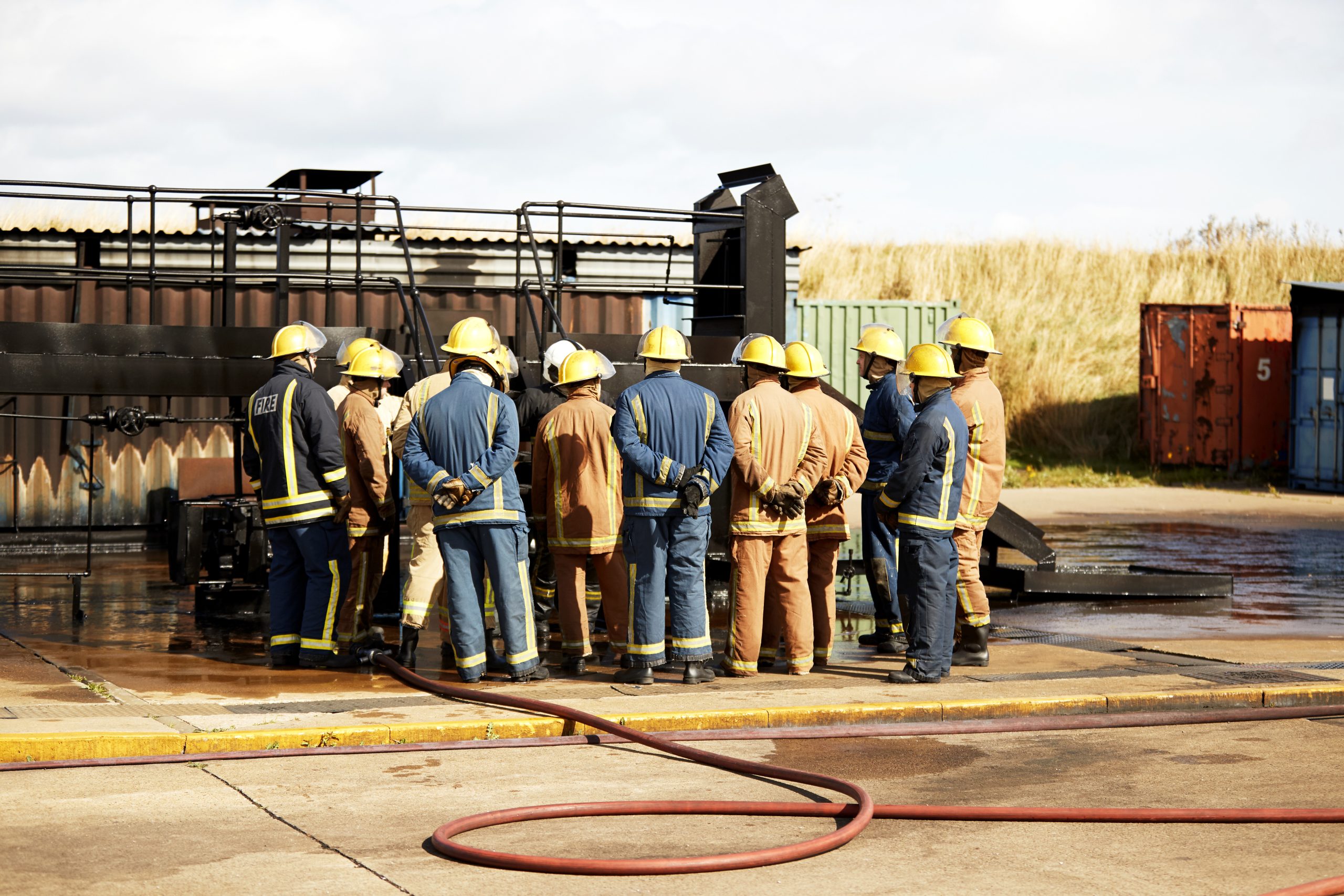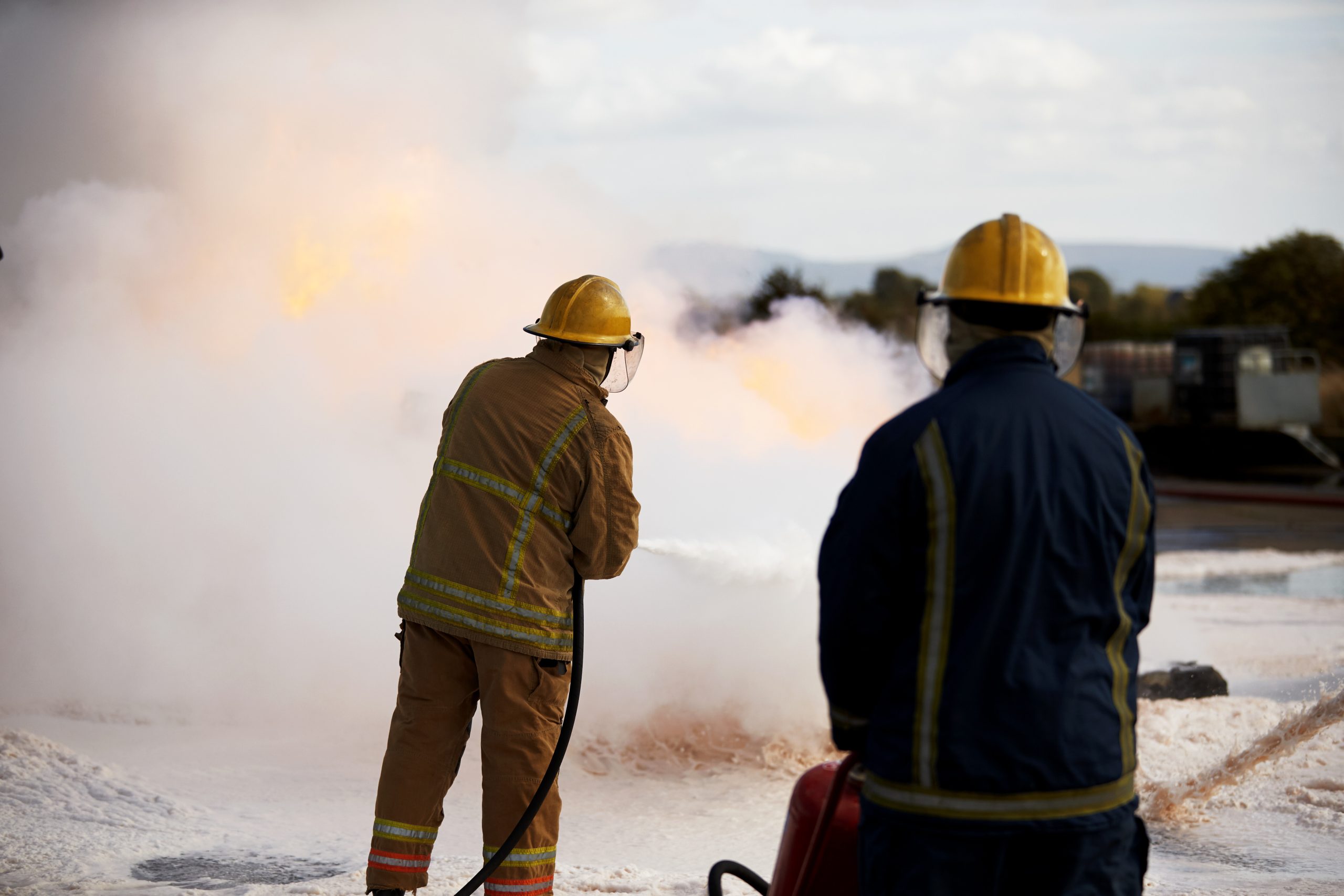Introduction
Fire can strike when you least expect it—and when it does, your team needs to know exactly what to do. Every company is responsible for making sure its employees are prepared for emergencies, especially fire-related ones. That means more than just hanging up a fire evacuation map or checking off a box during onboarding; it means having a solid fire safety training program that every employee understands and can act on.
Fire safety training isn’t just a best practice, it’s required by law. According to the Occupational Safety and Health Administration (OSHA), every employer must train workers on fire hazards and how to respond to them. Additionally, many states have specific fire safety requirements to which businesses must adhere. It is the responsibility of every company to ensure it is following the legal requirement for providing fire safety training to its employees. Skipping or rushing this training could lead to serious injuries, loss of property, and major legal consequences for your organization.
So, what’s the best way to train your employees? This blog post will help you answer that question. We’ll walk through your training options, explain how to match them to your team’s needs, and point out mistakes to avoid.

Understand Your Fire Risks
Before you choose a training method, take a step back and look at your workplace. What fire hazards are present in your specific environment? Every industry has different risks, and those risks will affect how you train your employees. For instance, if you’re running an office, your main concerns might include overloaded power strips, space heaters, and kitchen areas. But if you work in a manufacturing plant, the risks are more serious—flammable materials, machinery, and chemical processes all increase the chances of a fire breaking out. Warehouses, restaurants, schools, and healthcare facilities each have unique fire hazards too.
When it comes to fire safety training, there is no “one-size-fits-all” approach. You need to build a program that reflects your actual work environment. A general online course might be a good start, but it won’t go far enough if your team handles fuel or operates welding equipment. On the other hand, a full-day fire safety seminar might be overkill for a remote customer support team.
Fire safety training should always cover a range of topics, including, but not limited to:
● How to recognize and reduce fire hazards
● How to use fire extinguishers and other equipment
● What to do during an evacuation
● Who’s responsible for leading or assisting during emergencies
● How to communicate during an emergency
● The steps to take after a fire
● Basic first aid, including managing burn injuries and performing CPR
Knowing what your team needs to learn will help you pick the right training method for your business.

Traditional vs. Online: What’s the Best Fit?
Let’s take a closer look at your two main options: in-person training and online courses. Each method has its strengths and weaknesses, and the best choice often depends on how your workplace is set up.
In-Person Classroom Training: In-person training has been the go-to method for decades. It usually involves a trainer coming on-site to teach fire safety procedures through presentations, group discussions, and sometimes live demonstrations. Here’s why you might choose in-person training:
● Your workplace has high-risk fire hazards that need hands-on instruction.
● You want to include live fire extinguisher practice or emergency response simulations.
● You are required to provide certified in-person training for key safety positions.
The downside? It takes more time and resources to set up, especially if your team works different shifts or across multiple sites. Additionally, maintaining consistency may be difficult, as different instructors may conduct their classes differently.
Online Fire Safety Courses: Online training offers convenience and flexibility. Your employees can log in and complete the course when it’s convenient for them no matter where they are. It’s easy to standardize across locations, and it’s usually less expensive than bringing in a trainer, making it a budget-friendly option. Online courses work well when:
● You have a large team or remote employees.
● You want to make sure everyone sees the same material.
● You need to train people quickly without taking them away from their tasks for too long.
● You have a lot of new employees or turnover and need a consistent training message. Some online platforms, such as Capability, include built-in quizzes or interactive modules to keep people engaged, and also award digital certificates upon course completion that you can keep on file. This is extremely helpful for businesses wanting to maintain up-to-date training records for compliance audits.
Blended Learning: Blended learning combines the best of both in-person and online training. Employees start by learning the basics through online modules, then follow up with hands-on practice or live instruction. This method is effective because it allows your team to:
● Learn at their own pace during the online portion.
● Apply what they learned through in-person activities, like fire extinguisher practice or emergency drills.
● Get both the consistency of online training and the real-world application of live sessions.
Blended learning is especially useful if your workplace has moderate to high fire risks, but you need to manage your time and budget. It also gives employees more chances to ask questions and reinforce key safety concepts.
No matter which method you choose, make sure you track who completes the training and how well they understand the material. Use quizzes, hands-on evaluations, or follow-up discussions to test knowledge and ensure employees know how to stay safe in their workplace.
Choosing the Right Method for Your Team
Now that you know the pros and cons, how do you decide what’s right for your team? Start by thinking about your employees’ roles and where they work. Do they spend most of their time at a desk, on the road, or on the shop floor? Are they full-time, part-time, or contractors? Do they work together on-site, or are they spread across several locations?
You should also consider learning styles and language needs. Some employees do better with hands-on practice, while others prefer watching videos or reading and being able to come back to the information anytime they want. If your team includes non-native English speakers, it’s important to make sure your training is available in other languages and uses visuals to reinforce the message.
And don’t forget refresher training. Fire safety isn’t a one-and-done topic. You should review the material at least once a year, as well as anytime you update your procedures or change your building layout. Regular practice keeps fire safety at the top of everyone’s mind and helps prevent panic when an alarm actually sounds.

Common Mistakes to Avoid
Even the best training plan can fall short if you’re not careful. Here are some common mistakes that can put your team—and your business—at risk:
1. One-Time Training With No Follow-Up: Training someone once during orientation and never bringing it up again is a huge mistake. People forget what they don’t practice. Fire drills, refreshers, and reminders are key to long-term success. Not only should training be redone on a regular basis, but also anytime an employee seems unable to comply with regulatory standards. If someone doesn’t understand the evacuation process or can’t use a fire extinguisher properly, they need more training—period.
2. Ignoring Part-Time or Remote Workers: Everyone needs fire safety training, not just full-time staff. Make sure your part-time employees, contractors, and remote team members get access to the same information.
3. Lack of Clear Roles During Fire Emergencies: Who grabs the emergency kit? Who checks the break room? Bathrooms? Who calls 911? If your employees don’t know their roles, things can quickly fall apart during a fire. Assign duties and make sure everyone knows who does what.
4. Failing to Update Training: If you’ve recently hired new people, installed new equipment, changed your floor layout, your evacuation plan probably needs an update, and so does your training. Keep it current so your team stays prepared.

Conclusion
Fire safety training isn’t just another task to cross off your to-do list—it’s a critical part of protecting your people and your business. It is the responsibility of every employer to make sure employees know how to respond in an emergency. A strong fire safety program keeps people safe, and there is no excuse for not ensuring employees are prepared for the dangers associated with their work environment.
Take a few minutes today to review your current fire safety plan and training approach. Ask yourself: Is it clear, up to date, and effective? If not, now’s the time to make changes. Your team is counting on you to lead the way.
Safety Instruct’s online safety training courses help to educate employees on workplace safety and health regulations, policies, and best practices. These courses cover a wide range of topics—including Fire Safety—all designed to fit the needs of various industries. To find the courses you need for your business today, click the link below! https://www.safetyinstruct.com/











Leave A Comment